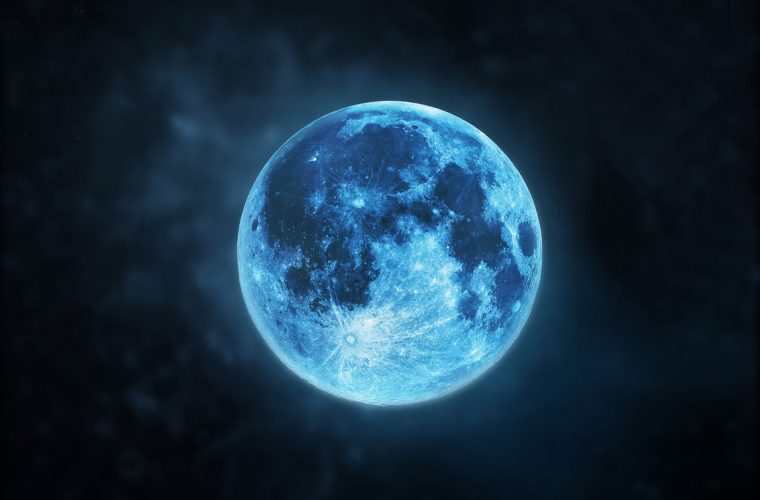The Next Blue Moon in 2021

Well, we often hear the famous phrase, ‘Once in a Blue Moon’ which is used to define the rarity of an incident. The appearance of an additional moon during a given period can be termed as a blue moon. It is a rare but fascinating phenomenon. The next Blue Moon in 2021 will appear on August 22, 2021. The Blue Moons in the same year will be in the year 2037. The last Blue took place on October 31, 2020.
Generally, blue moons are witnessed only about every two or three years however, in a rare condition in 2018, we saw two blue in one year which were only two months apart – one of them being a lunar eclipse. Different cultures have named these moons according to their occurrence in every month. For example, the full moon appearing in January is the “wolf moon. In the recent times, the term Blue has been applied to the second full moon within a single calendar month. Normally, there are approximately 29.5 days between full moons, hence it is quite unusual for two full moons to fit into a 30- or 31-day-long month.
The name of every moon was set by a rule followed by the almanac. For example, the Lenten Moon would fall during Lent; during the last days of winter, hence it was called the Lenten Moon. The first full moon of spring was called the Egg Moon — or Easter Moon, or Paschal Moon. This moon would fall before the first week of Easter. The Moon Before Yule and the Moon After Yule. Hence, whenever there appeared four season moons in one season the fourth one was termed as Blue Moon, allowing the other full moons to occur at the proper times in sync to the solstices and equinoxes.
What is a seasonal blue moon? There are 12 months in a year and the length of each month varies depending on the single orbit of the moon around the Earth. The months are further divided into seasons – winter, spring, summer, fall, each lasting for three months and hence we have three full moons.
If any season witnesses four full moons, then the third full moon may be called a Blue Moon. A Blue appeared on November 21, 2010, another was seen on August 20-21, 2013, followed by one on May 21, 2016, and another on May 18, 2019. In the year 2067, a monthly blue moon will appear on March 30, and a seasonal Blue moon on November 20. In this instance, there are 13 full moons between successive December solstices – but only 12 full moons in one calendar year and no February 2067 full moon.
Seasonal Blue Moon is the basically the original astronomical definition of a Blue. Between each astronomical season, that is the time between each solstice and equinox, generally there are three Full Moons. But some years, there are four Full Moons in a season again regarding the fourth one as a blue moon. In 2019, the full moon in May was a seasonal Blue Moon. The equinox on March 20 marked the beginning of, and less than four hours later the first Full Moon alignment was witnessed, on March 21. The second Full Moon was on April 19, and the third, the Blue Moon, on May 18. The fourth and last Full Moon before the June solstice was on June 17.
Hence, we use the term once in a blue, considering its appearance. Since it appears only in two to three years. Someday a blue moon might just appear out of the blue, ironically. The moon that appeared in October 31, 2020, was not look typically blue like you might see in an image online, and blue-colored moons that we draw in pictures but will be a blue one for sure. Photoshop may give you a full blue moon but an original one that appears as a miracle of the universe is a sight to see.
Blue moons are another wonderous phenomenon of nature that makes us appreciate the beaty of the universe we live in. It is an enigma that has taken scholars and experts billion of years to study and understand the functionality and yet we are just half way there.














